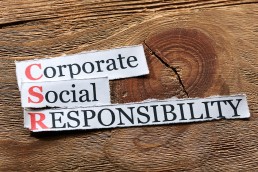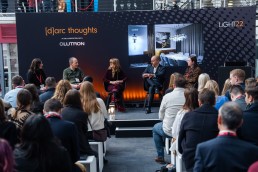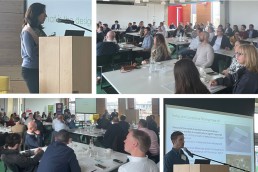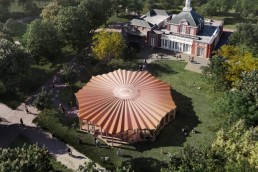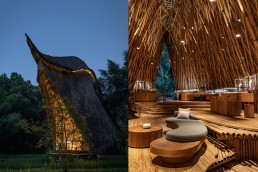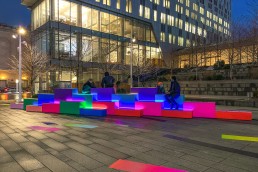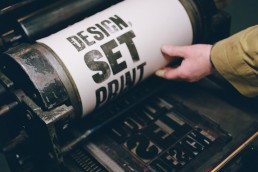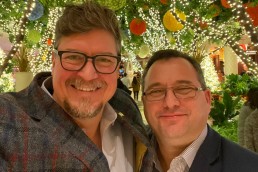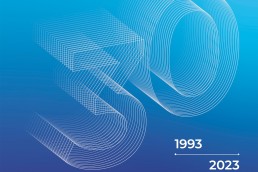GLA: Do the right thing
In this column, various members of the GreenLight Alliance explain the steps that their companies are taking as part of their broader environmental and social responsibility programmes.
“Integrity gives you real freedom because you have nothing to fear since you have nothing to hide.” - Zig Ziglar
In recent issues we have dived deep into metrics, legislation, and regulations. In this issue we ease back and take a broader overview to look at the emerging trend for examination and verification of a corporation’s broader environmental and social impact. Whether you are familiar with the acronym CSR (Corporate Social Responsibility) or ESG (Environmental, Social, and Governance), we are talking about largely the same thing; the values and responsibilities that a company proclaims to live by. Increasingly companies are choosing, or being obliged, to publish these and to verify them, by means of independent organisations.
This can be to lock-in mission focus, satisfy commercial prequalification criteria, aid recruitment, impress (potential) shareholders, customers or simply to drive internal behavioural changes. Whatever the reason, we are seeing a growing number of new icons appearing in PR output from companies, including across the lighting industry. Primarily manufacturers, but the design and specification community too. The GreenLight Alliance see this trend as encouraging, as more and more companies mobilise, not a moment too soon, to engage with the mammoth challenges we face. While specific approaches vary, the direction of travel is encouraging.
With the recent proposals around the world for legal consequences of making unsubstantiated green claims, we expect to see even more rigour and independent verification.
Whether coaxed or instinctive, we at the GreenLight Alliance welcome the progress. Here follows a brief tour through some of the most prominent examples in our industry, along with words by some of their proponents.
We leave you with this observation from someone who has demonstrated that business success can go hand in hand with integrity, in the broadest sense of the word:
“…it’s always been difficult for us to lead an examined life as a corporation. I’ve always felt like a company has the responsibility to not wait for the government to tell it what to do or to wait for the consumer to tell it what to do, but as soon as it finds out it’s doing something wrong, stop doing it.” - Yvon Chouinard, Patagonia Founder, environmentalist, philanthropist.
Employee Ownership
Arfon Davies, UK Lighting Design Director, Arup
Arup has been employee-owned since 1977 and is currently the third largest employee-owned firm in the UK. Our ownership structure gives us the freedom to decide where we can make a difference – investing in the research, products, partnerships, and skills we believe in. Rather than staying focused on immediate shareholder returns, it gives us more ability to plan for the long-term benefit of the firm and our members, making decisions that keep us resilient and support our members’ passions.
It’s also a model that removes barriers to progress as we work with others to create a more sustainable future for people and planet. It gave us the flexibility to become one of the first organisations to commit to UN Sustainable Development Goals, allows us to carry out pro bono work that benefits communities, and makes it easier for us to fund and develop solutions that accelerate the transition to net zero.
ISO 14001
Colin Ball, Lighting Director, BDP
In accordance with ISO 14001, data has been collected for our studios since 2010, and has increased in accuracy and robustness across this period as problems have been overcome, particularly in our regional studios. Our energy and water reduction targets were, up to 2018, based upon an improvement on the 2013 baseline year. 2018 concluded our five-year reporting period from our 2013 baseline, where we exceeded each of our targets – keeping our Scope 1 and 2 emissions below 1000kgCO2e/capita, implementing measures to encourage sustainable travel decisions, and reducing water consumption by 5% per capita.
In 2020, we made significant updates to our Sustainability Policy to protect and enhance the five capitals (natural, human, manufactured and financial) across all aspects of our operation. This included setting Science Based Targets for our business operations. We have also committed to achieving net-zero operational carbon of our studios by 2025 and reducing waste. We are in the process of developing and integrating minimum environmental performance standards for our projects.
We review the performance targets every three years to ensure performance remains valid and suitably ambitious. Where targets are achieved at or prior to this review, new targets are developed.
Sustainable Development Goals
Alexia Gkika, Associate Lighting Designer, Buro Happold
Buro Happold is committed to the promotion of equitable and sustainable development that ensures the wellbeing of people and the enhancement and protection of the environment, in alignment with the UN Sustainable Development Goals. We recognise that the work we do as engineers and consultants has long-lasting implications for the ability of our clients to meet their own net zero goals and to realise long-term value from their assets.
In March 2021, Buro Happold set validated 1.5°C aligned science-based targets to reduce absolute (total) scope 1, 2 and 3 greenhouse gas emission 21% by financial year (FY) 2025 from FY 2020 base year. This year we have carried out detailed calculations of our carbon emissions (Scope 3) related to purchased goods and services by applying the Greenhouse Gas Protocol spend-method.
The above is a succinct extract from Buro Happold’s annual Global Sustainability Report 2022 – please refer to the extended document for more information.
Living Wage
Kevan Shaw, Design Director, KSLD
We chose to become accredited Living Wage employers as part of our CSR policy a few years ago. While we know Lighting Design is not among the higher paid professions, there is no way we would expect to even pay interns anything as low as the living wage. As a part of CSR and the requirements of accreditation we need to ensure our suppliers are also paying the Living Wage. Doing this created a re-think from our cleaning contractor, who did agree to up the wages of their staff for a very minimal increase in our contract price. The idea of the living wage goes far beyond this and forces us to look at all our suppliers, for example courier companies that we use, online suppliers for stationary, and contractors we employ are all chosen from accredited Living Wage Employers. Making these enquiries certainly opens your eyes to the corporate behaviour of the people we do business with.
Social Value UK
Lauren Bailey, Head of Social Value, Ridge and Partners
We are proud that Ridge has become an organisational member of Social Value UK. We understand the importance of being a responsible business, ensuring that local economies, people, and the environment receive a positive benefit from the delivery of our services. As we look to further unlock social value in our construction projects, we will work with clients and supply chains to deliver added social, economic and environmental value.
By partnering with Social Value UK, we are committing to implementing the eight principles of social value. This will see us improve our social value accounting practices and strengthen the impact we have on our clients, our people, and communities. We will also be implementing new accounting methodology to measure and report on activity in line with BS 8950 – the British Standard for social value.
1% for the Planet
Chris Miller, Co-Founder and Director, skinflint
For skinflint, charitable giving, and sustainability have always been important to our CRS strategy. This commitment was formalised in 2021 when we partnered with 1% For The Planet. Meaning, each year, 1% of skinflint’s gross sales are donated to a range of approved environmental partners. Employees voted on a range of NGOs that are mission aligned; that have the same goals and purposes as the brand, but that also mean a lot to them personally. Supporting our local community as well as thinking nationally and globally, we eventually settled on Cool Earth, The River’s Trust and Surfers Against Sewage. As champions of the circular economy, elsewhere skinflint chose to eschew Black Friday by instead matching sales over a five-day period and donating the same amount to these charities. The hope is to inspire other businesses and individuals to do the same.
www.onepercentfortheplanet.org
B Corp
Dave Hollingsbee, Managing Director, Stoane Lighting
Looking back, B Corp certification was as important a milestone in the company’s journey to becoming employee owned. Only a little while after certifying did we realise that we had gone a long way to satisfying a niggling existential question of what it’s all about. Formally altering our articles of association to give stakeholders primacy over shareholders, as we became a benefit corporation, seemed logical and felt good.
Whether the “B” appealed to clients or recruits was not the main point, though anecdotally it seems to be increasingly positively recognised. The holistic validation across five pillars: Governance, Workers, Community, Environment and Customers, was rigorous and extensive. The team wear the B proudly. It’s becoming a regular touchstone against which decisions are gauged. It drives better internal practices and forces a cruel level of transparency. We are hungry to build on our score during our three-year recertification later this year.
Cradle to Cradle
Tim Bowes, Head of Lighting Application, Whitecroft
With the development of circular lighting solutions, we were keen look for third party verification to support our actions. The reason for this was twofold. Firstly, it was to provide transparency of our design choices to support our customers in making circular and sustainable product choices. Secondly, and as importantly, it was to provide a roadmap to help our business make the right choices and support future business model innovation.
The implementation of the Cradle to Cradle Product standard into our ‘Whitecroft Vitality’ range of products, means an alignment with “the global standard for materials, products and systems that positively impact people and planet.” The standard looks at five key areas of design and business actions: Material Health, Product Circularity, Water and Soil Stewardship, Clean Air & Climate Protection and Social Fairness. To date we have eight product families as part of ‘Whitecroft Vitality’ certified to bronze level.
EcoVadis
Sebastian Gann, Sustainability Director, Zumtobel Group
The Zumtobel Group has a long history of working towards a sustainable future – from developing the first Environmental Product Declaration in 2011 to its technology brand Tridonic being one of the first manufacturers of electronic lighting components to receive a Cradle to Cradle certification for some of their LED modules. By following 12 of the UN’s Sustainable Development Goals, along with ensuring that all our European production sites are ISO 14001 certified, the Zumtobel Group were honoured to achieve the EcoVadis Gold medal in 2021, with Tridonic separately achieving Silver this year. EcoVadis is a sustainability rating platform that looks at a company’s performance in four key categories: environmental responsibility; labour and human rights policy; sustainable procurement; and ethical business practices. In this way EcoVadis doesn’t just look at how a product is made but what the business that produces it stands for. Given the Zumtobel Group’s continuously evolving sustainability agenda, we of course hope to achieve an improved EcoVadis score when the rankings are next updated.
LEED Certification
Xander Cadisch, Sustainability Director and Senior Project Manager, Phos
For Phos, LEED compliance is a vital part of what we do. Along with our B Corp accreditation, the LEED certification has cemented our commitment to offering efficient and cost-effective lighting solutions. Phos chose LEED accreditation to help reduce the environmental impact of our operations and buildings, and align further with our company’s values and mission. It also helps us appeal to customers, who are becoming more conscious of the environmental impact of the products and services they purchase.
Finally, LEED accreditation can lead to cost savings over time. By implementing sustainable building practices and technologies, we have been able to reduce our energy consumption and lower our operating costs.
Overall, there are many reasons why we chose to pursue LEED accreditation but there really are no downsides.
All of the contributors above would be glad to tell you more if you have questions. Also on the radar and perhaps some topics we will see more of in the near future include:
Social Enterprise UK (www.socialenterprise.org.uk)
Make my money matter(www.makemymoneymatter.co.uk)
Better Business Act (www.betterbusinessact.org)
Architects Declare (www.architectsdeclare.com)
Race to Zero (www.unfccc.int/climate-action/race-to-zero-campaign)
[d]arc thoughts to return at Clerkenwell Design Week
(UK) – During Clerkenwell Design Week, the [d]arc media editorial team will take to the stage to host a series of light-focussed [d]arc thoughts talks and discussions. The talks will take place from 23-25 May at Clerkenwell Design Week’s exhibition, Light.
Held within the subterranean House of Detention, the former Victorian prison will showcase an array of leading international lighting brands and spectacular standalone installations.
Over the course of three days, [d]arc media will host nine talks covering various aspects of the lighting industry, from discussions on wider themes such as sustainable specification, equitable design and residential lighting, to deeper insights into projects such as Harrods, London, Yotel Vega, Glasgow, and arc’s latest cover story, Battesea Power Station.
The full line-up is as follows:
Tuesday 23 May
11:00 | Working with Residential Lighting
Speakers: Marcus Steffen, MSLD; Susie Rumbold, Tessuto Interiors; Lizzie Webster, Fraher and Findley; Raminder Virdi, Lutron
The panel of experts will look at what exceptional lighting looks like within the home; how residential projects differ to working on commercial projects and what designers should be aiming for when it comes to the 'right light' within a residential environment.
13:30 | Quiz Time - Spot the difference: Illuminated thinking or kept in the dark
Speakers: Gary Thornton, Nulty; Inessa Lomas, Arup; James Poore, JPLD; Kael Gillam, Hoare Lea
The educational international platform The Lighting Police invites everyone to participate in an interactive fun session focusing on designed and not designed light, highlighting important elements that we take for granted in our daily life and not noticing how they are affecting our health and wellbeing. The session will be moderated by four members of the advisory board of the project and at the end of the session, we are certain that everyone will leave empowered to start observing more and aiming for better lighting conditions in their lives!
15:00 | Project Focus - Yotel Vega Hotel, Glasgow
Speaker: Luke Artingstall, Artin Light
Lighting designer and founder of Artin Light, Luke Artingstall sits down with [d]arc media to discuss the intricacies of his lighting design for the Yotel Vega Hotel project in Glasgow; from brief, to concept, to challenges and the end result - we uncover it all.
Wednesday 24 May
11:00 | Sustainable Specification - 5 Questions to ask when Specifying
Speakers: Lisa Hinderdael, HagenHinderdael; Mike Cascarino, Michael Grubb Studio; Sophie O’Rourke, AECOM / Green Light Alliance
We are all trying to be “more sustainable” in both our personal lives and in business, but when it comes to commercial projects what does this look like?
Through this session, our experts will leave audiences with key pointers, or ‘questions’ to consider when working on a project for it to be as green as is realistic.
13:00 | Women in Lighting panel - Are public spaces in the UK designed for equity?
Speakers: Kimberly Bartlett, Introba; Alison Gallagher, Arup
As part of [d]arc media’s commitment to supporting the Women in Lighting initiative, we hand the floor over to an expert panel to discuss whether UK cities are truly designed for equity, highlighting good and bad examples of urban planning and lighting.
15:00 | Project Focus – Harrods, London
Speakers: Simon Rawlings, David Collins Studio; Graham Rollins, Lighting Design International
Leading design studios David Collins Studios and Lighting Design International regularly work together on projects. In this Q&A the two designers will discuss their work together on various Harrods projects. We'll get to grips with how the interior design schemes work together with the intricacies and technicalities of the lighting design.
Thursday 25 May
11:00 | Project Focus – Battersea Power Station, London
Speakers: Clementine Fletcher-Smith & Philip Rose, Speirs Major
After opening to great fanfare in late 2022, [d]arc media steps inside the newly renovated Battersea Power Station and speaks to Speirs Major about the landmark’s monumental new lighting design.
13:30 | In Conversation – The Wave Collection
Speaker: Speaker: Esther Patterson, Curiousa Studio
Having been awarded ‘Best Decorative Lighting Product’ at this year’s [d]arc awards for the Wave Collection, [d]arc media sits down with designer and founder Esther Patterson to delve deeper into the collection’s design process, her inspiration, and how an ethical approach to production and manufacturing is key to her ethos.
15:00 | How to be Brilliant from the Institute of Lighting Professionals and BEGA The Animal Kingdom
Speakers: Farhad Rahim and Carolina Florian from Buro Happold
Does it bug you that lighting affects different species in so many conflicting ways? Considering the impact of lighting on animals could drive you batty, but help is at hand. Carolina Florian and Farhad Rahim have squirrelled away many surprising facts and are literally becoming experts in the field. They have guided clients with motivations ranging from genuine ecological care to developers wanting to ‘get through planning’, and now they will share these experiences with you.
The talks are free to attend, visitors just need to register for Clerkenwell Design Week here.
Lighting Industry gears for growth in remanufacturing
(UK) - Experts gathered in London on 27 April to discuss the opportunities and the challenges of remanufacturing lighting equipment.
More and more lighting manufacturers are adding reconditioning to their business model. A new standard is being published, and regulations are likely to change to incentivise remanufacture. Now is the time for all to embrace the drive to truly sustainable lighting.
At the one-day special conference hosted by Recolight, attendees learnt how to sell the concept of reconditioned lights, develop best practice sustainable policies and procedures, comply with the relevant standards, and set up a testing and compliance regime for reused luminaires.
Simon Fisher of F Mark explored the ways we can sell the concept to our clients; Natalia Duffy of Cundall looked at lighting design using reconditioned luminaires; Kevin Stubbs of Llumarlite took visitors through BS8887; Tom Ruddell of Egg Lighting showed what a testing and compliance regime looks like; Francesca Cameron of Recolight offered a first glimpse of Circular Place, a portal to connect organisations that have used or surplus product to organisations that can make use of them. David Clements of Future Design examined how to remanufacture at scale; Andrew Nixon of Gamma Illumination and Darrell West of Eco Fix UK Energy Solutions walked attendees through some successful remanufacturing projects.
A panel discussion with both manufacturers and specifiers looked at the barriers to the adoption of a reuse culture in the lighting sector and discussed ways in which those barriers could be overcome. Panelists included Alison Gallagher of Arup, Tom Ruddell of EGG Lighting, Martin Thompson of Tridonic, Antonina Crino, of Signify, and Howard Lawrence of Commercial Lighting Systems.
Several attendees commented on the event. Martin Thompson, Tridonic, said: “In an ever-confusing overload of environmental and sustainable information, the Recolight events bring clarity to the issues affecting all players in the lighting industry. Importantly, much of the focus comes from those that are already 'doing' so is based on the reality of being able to achieve future goals.”
Simon Fisher, F Mark and founder of the Regen Initiative, added: “Remanufacturing is now a defined and suitable alternative to simply purchasing new products. The appetite and will to engage in remanufactured solutions is evident, and regulations and standards are in the final phase of development to help deliver the confidence and certainty that a remanufactured product is safe, compliant and credible.”
Tom Ruddell, Egg Lighting, said: “The Remanufacturing Lighting Conference was a fantastic event that really underlined the benefits of the approach, with inspirational case studies to evidence the merits and processes in action. Incredible to have such a wealth of expertise and innovative thinking in one room – the event left me with excitement and optimism for our sustainability journey.”
Delegates shared challenges they face with remanufacturing. Getting the message across about remanufacture, that it is not just about retrofit. Associated costs in striving for a net zero business. Acceptance from end users to renew rather than replace lighting.
There were many positives with delegates saying:
- Remanufacture is not just about cheap retrofits but the more important aspect is to stop taking natural resources from the planet and then putting them back into landfill at end of life.
- This is a developing segment and while at source it is about modifying habits for the greater global and environmental good, there are commercial opportunities to be explored. The increase in attendees demonstrates the significance of sustainability in both cases.
- The remanufacturing sector is quickly becoming formal and picking up pace. Leading lighting design professionals are on board with the concepts, message, and key terms.
Summing up the event, Recolight CEO Nigel Harvey said: “It was fantastic to witness more than 70 lighting leaders really engaging on the challenges and opportunities that lighting remanufacture now presents. The room was buzzing with energy. The scene is now set for material growth in this sector, as more manufacturers get involved, and more end users demand reuse as an option.”
Zumtobel continues support for Serpentine Pavilion
(UK) – Zumtobel has announced that it is sponsoring this year’s Serpentine Pavilion – the fourth time that it has done so.
Zumtobel, and its sister brand Thorn, will provide all of the lighting on a complimentary basis, for À table – the 2023 Serpentine Pavilion, designed by architect Lina Ghotmeh.
Inspired by the architect's Mediterranean heritage and fervent discussions around the table over current affairs, politics, personal lives, and dreams, the title À table comes from a French call to sit down together at a table to enter into dialogue and to share a meal. As such, the interior of the Pavilion features a circular table along the perimeter, inviting visitors to convene, sit down, think, share, and celebrate exchanges that enable new relationships to form.
Zumtobel's Supersystem Bollards installed around the exterior, will greet visitors as they approach the Pavilion’s exterior, while 70 Thorn Contrast 3 architectural floodlights will illuminate the grooves of the interior ceiling structure and the area above the bar.
Paul Kilburn, Managing Director UK & Ireland at Zumtobel Group, said: "We are thrilled to be sponsoring the Serpentine Pavilion again this year. Our continued support for this amazing event is a testament to Zumtobel's commitment to pushing the boundaries of innovation and sustainable design. We are excited to work with Lina Ghotmeh and the Serpentine team to create an unforgettable experience for visitors."
The Serpentine Pavilion is an annual architectural commission presenting new and innovative designs by international architects. Built predominantly from bio-sourced and low-carbon materials, the Serpentine Pavilion 2023 continues Ghotmeh's focus on sustainability and designing spaces conceived in dialogue with the natural environment surrounding them.
The Serpentine Pavilion 2023 will open in June and be on view through October in Kensington Gardens. Zumtobel is excited to participate in this unique event and looks forward to the opening of the Pavilion.
www.serpentinegalleries.org
www.z.lighting
Winners announced for 2023 Casambi Awards
(Finland) – The winners of the 2023 Casambi Awards were revealed during the Casambi Summit at the end of April.
The annual awards aim to celebrate the innovative ways in which architectural lighting projects and products have deployed Casambi technology to life-enhancing effect.
Adjudicated every year by an international jury, the 2023 panel boasted a great breadth of expertise within the architecture and lighting professions, with each member excelling in their field. The jury included: Chris Lepine, Director, Zaha Hadid Architects; Sebastian Aristotelis, Co-Founder, SAGA Space Architects; Francesco Funari, Head of Product Marketing, Flos; Yah Li Toh, Principal of The Light Lab; Cameron Girgus, Training Manager, Diode LED; and Aileen Herpell, Co-Founder, Aimotion.
Best Project
By majority vote, the award for Best Project this year went to the John Hardy Boutique in Bali.
Together, CheongYewKuan, Studio Nimmersatt, blancostudio Bali, Kalpataru and Ascendo Lighting have illuminated the architecture through the thoughtful use of bespoke pendant lighting and carefully designed lighting in the jewellery showcases. The Casambi system was deployed to eliminate the lighting control wiring process for the existing bamboo structure. To achieve maximum sustainability and energy efficiency for the project, only three Casambi nodes were installed to control the entire lighting design.
Cameron Girgus, Training Manager at Diode LED and award judge said: “I cannot say enough great things about this project. This is a testimony of when great lighting is integrated into beautiful architecture. Absolutely stunning!”
Francesco Funari, Head of Product Marketing at Flos and jury member, added: “The look and feel of the project are extremely elegant, sophisticated and balanced. The lighting design is extremely simple, but it fully integrates with the structure creating a very smart and unique environment.”
Best Product
Ledim (Arditi) has won Best Product with Lepuk, an extraordinarily tactile remote control that fits snuggly into the palm of your hand. The Lepuk offers four-channel applications inside Casambi networks: touch to dim the ball cap and change the channel by tilting.
Yah Li Toh, Principal of Light Collab and jury member noted that the Lepuk is particularly interesting as it sets apart the conventional square type of switches/keypads. With this, Funari celebrated the idea of converting a remote control into a decorative element and Chris Lepine, Director, Zaha Hadid Architects and award judge added: “This is a quality-looking, tactile product. The beautiful material combination and finish encourage the user to pick up and engage with the object.”
Cheryl Wing-Zi Wong & Arup: Common Ground
COMMON GROUND from Cheryl Wing-Zi Wong on Vimeo.
Common Ground is a site-specific, interactive public artwork created by artist Cheryl Wing-Zi Wong, with lighting design and programming from Xena Petkanas and Christoph Gisel, Arup. Comprised of a colorful pavilion and floor motifs that dance across The Plaza at 300 Ashland, Brooklyn, the installation draws inspiration from the geometry of shrines and sacred spaces and referencing the terraces of the site, this architectural intervention transforms the plaza into an oasis for sitting, socialising, and gathering by day and by night.
Common Ground creates a bold, joyous interruption in the plaza, one of our everyday spaces, and offers a playable topography to embrace the here and now. As a community hub, Common Ground aspires to cultivate togetherness and resilience, while encouraging moments of pause, reflection, and play.
During the evening, Common Ground creates a shared synesthetic experience. Illuminated with color-changing lighting and sensors that register environmental audio, light animations shimmer across the sculpture’s steppes in response to these sounds – the movements of passers-by, footsteps climbing on the structure, voices, the ambient hum of traffic. Common Ground is a place of joy and light, celebrating resilience and togetherness to embrace the here and now.
The piece features 74ft of individually controlled RGB flexible encapsulated fixtures. Two sound sensors are located within the wooden modules at both ends of the sculpture. When no sound is detected, the fixtures slowly pulse in the artwork’s colour palette. When sound levels meet the designated threshold, a pulse of coloured light crosses the sculpture, originating from the side where the sound was detected.
Over the course of the exhibition, public programmes, including music and dance performances, activate the pavilion.
Lightswitch marks 30th anniversary with branding shift
(USA) - Lightswitch is celebrating its 30th anniversary with a branding shift that embodies the company’s philosophical approach to design.
Since its founding, Lightswitch has grown into an industry-leading, multi-studio practice that stretches across the U.S. and beyond. Its dedicated team creates distinctive and award-winning projects around the globe in the fields of entertainment, events, museums, architecture, and immersive experiences.
Now, with three decades behind them, they’re introducing a new brand identity that speaks to its philosophy. Inspired by three intersecting beams of light, this symbol visually defines the practice’s responsibility as designers to balance clients' creative, logistical, and financial objectives.
Chris Medvitz, Principal at Lightswitch said: “At Lightswitch, this foundational philosophy has guided us through our first 30 years in practice – and this brand identity represents who we have always been. The discipline of design is fluid, pushing and pulling between the three elements of finance, logistics, and creativity.
“We think of the future of Lightswitch in the same way: not static, but dynamic, and always evolving with each new endeavor. 30 years in, we are looking forward to even more growth and success as we continue to fulfill our duty as designers: balancing all aspects of design while bringing light to our corner of the world.”
Clerkenwell Design Week adds to strong line-up
(UK) – Multidisciplinary artist and designer, Yinka Ilori, is the latest name added to the exciting line-up for Clerkenwell Design Week 2023, joining the likes of Sebastian Cox, and Nipa Doshi of Doshi Levien.
The 12th edition of the festival returns on 23-25 May with its biggest programme yet, featuring a total of more than 600 industry events.
Ilori has teamed up with Domus to launch his debut tile collection – Yinka Ilori x Domus, which will launch at CDW. To mark the occasion, Ilori will present a window display installation demonstrating the creative potential of the new collection. The installation will be on view at Domus Clerkenwell on Great Sutton Street.
Elsewhere, Sebastian Cox is launching his first lounge chair made in British-grown wood and upholstered in entirely natural, sustainable, and non-toxic materials. Nipa Doshi, meanwhile, will close the talks programme, Conversations at Clerkenwell, on 25 May (15.00), speaking to Kaye Preston, Editor of OnOffice, about her recent projects and the significance of colour in design across a client base that varies from furniture and accessories to textiles.
In addition to some of the best names from the industry, this year’s festival welcomes more than 300 design brands and makers exhibiting across 11 temporary venues and six design destinations.
Together with a network of over 130 local showrooms, they offer architects and specifiers, interior designers and the general public alike the opportunity to experience everything from new furniture and lighting to kitchens and bathrooms, materials and surfaces, decorative accessories, and more.
A range of decorative lighting products will be on show in a dedicated exhibition located within the subterranean House of Detention, a former Victorian prison. While Spark & Bell will launch a handmade, long bone China shade named Kinvara, Studio Lloyd, a Cape Town-based lighting studio led by designer Ashlee Lloyd, will exhibit at CDW for the first time – with some of its custom-made crochet statement sculptures including Amoeba and Sayari.
Also new to the festival is Pablo, the brainchild of industrial designer Pablo Pardo. The brand will showcase Totem, a new LED lighting system of blown opal glass shades designed around a modular platform – alongside other pieces such as T.O and Bola Lantern.
From Spain, Aromas will present its newly launched ranges, Elma by Jose Fornas and Elli by JF Sevilla; while Bioo, founded by entrepreneur Pablo Vidarte, will introduce its award-winning Bioo Lux, the world’s first lamp that can be switched on and regulated through human contact with a living plant.
Visitors to Light will also find a variety of decorative and architectural lighting designs from the likes of Lladro, Jonathan Coles, Abalon, Tom Kirk, Studio Haran, Franklite and Erco, among others.
Meanwhile, exhibiting in both Light and British Collection, Curiousa will show its new Wave
chandelier made up of five hand-formed glass vessels threaded onto beams of light. Chelsom, new to the festival and one of the show sponsors, is set to unveil its brand-new collection, Edition 28, in Old Sessions House – following its 75th anniversary in 2022.
The 12th edition of Clerkenwell Design Week takes place across EC1, London from 23 – 25 May 2023. For more information, please visit clerkenwelldesignweek.com.
Designers Mind: Working FOMO
Designers Mind contributor Kael Gillam questions the ‘always on’ mindset, and examines why some may struggle to switch off outside of working hours.
In the working world, is there such a thing as being too consistent? This question came up in a recent discussion with the DM team and made us wonder about the amount of effort and commitment we put into our working lives. Some would argue that it is praiseworthy to check your emails on holiday, always say yes to last-minute requests, and work over your lunch hour. Surely, you might argue, that attitude and those actions embody consistency, commitment, and hard work at their finest. If you’re always contactable, you’re consistent. If you’re always caught up on your emails, you’re consistent. But we need to dig into this a bit deeper; where do your ‘working hours’ end and your free time begin when you’re ‘always on’?
I’ve had this conversation with colleagues both more and less experienced than I am, and there just simply isn’t a consensus as to why people are drawn to being ‘on’. Some feel that there is a ‘fear of missing out’ (FOMO), if they aren’t in some way still connected to the office. What if something happens to the presentation while I’m away? What if the client calls and the next team members won’t deal with it well? There’s two ways to look at this mindset; a lack of trust or a lack of control. When we don’t trust in our team members’ capabilities, then we will constantly fret about whether something can be dealt with ‘correctly’ in case of our absence. And when we are bad at delegating and refuse to allow others to take on shared responsibility for tasks in our absence, we will constantly fret about whether something will be taken out of our control and sent askew by an uninformed colleague. Both are disparaging to our colleagues; in this model we believe that we are such an integral part of the team that our absence will rock the boat and send everything into chaos.
While we are of course important members of our workplaces, relinquishing control and trusting in others is an integral part of being a good teammate. With good handovers or briefings, and making our colleagues feel like a valued part of the project(s), then we can feel more confident in being able to ‘let go’ and put trust in their abilities while we’re unavailable. A teammate that is only ever given information piecemeal, and/or is then micromanaged in undertaking unrelated tasks, will not feel confident in their duties and thus be unable to make informed decisions in the absence of their project leader. A teammate that is included in meeting minutes, has indirect contact with the client or lead designer, and has a full overview of a project will feel more ownership and have more confidence when decisions need to be made. Equally, when they’re better informed, they will be more confident in responding to difficult or ambiguous situations with ‘I don’t know’, and allowing a question to sit until they have an answer.
Along with trust and control, the ‘fear of missing out’ can come from a lack of desire to detach from the mentality of the workplace. Some people are really driven by the fast-paced nature of the workplace, and thrive on the low-level (not the high-level!) stress that comes along with making important decisions and communicating our creative endeavours. There is that buzz that comes along with a good presentation, a successful client meeting, a deadline being met and sent out. There is also the joy that we derive from our interactions with our colleagues; sharing those successes and failures together can be intimate and special experiences. More simply, the time spent with our colleagues can foster a general sense of kinship in the day-to-day of office life, which is likely quite different from the relationships we would form outside of the pressure cooker of our profession. When we’re not in the office, either virtually or in person, we may feel like we miss out on these bonding moments and feel the need to be kept up to date so that we don’t feel as though we’ve missed out on important social moments.
On the other side of the hesitance to detach is the possibility that the very intense and ever-changing work environment may feel more comfortable and easier to navigate than our home lives. This can manifest in many ways for an individual, and might be very difficult to explain to colleagues or managers when we make the choice to tip our normal balance in the favour of more work. I have been there myself; in turbulent times in my home life, I have thrown all of myself into my projects and my commitments at the office. There is perhaps a somewhat tongue in cheek phrase that goes ‘would you rather the chaos you know or the chaos you don’t’? I chose the chaos I knew, working 60-hour weeks and answering calls from my manager during my holiday time because I was more passionate about my working life than my home life. These circumstances are so much harder to navigate, and need sympathy and time to help our teammates find their own equilibrium again.
‘Letting go’ is often a trust exercise built over a long period of time, and one that we can all equally improve upon to free up our minds of anxiousness and clutter. Sometimes it is trust in ourselves that there is resilience built into the team, and we can prop each other up and fill in the gaps when someone is away. Sometimes it is trust in our colleagues that when we delegate tasks, that their result will be just as satisfactory as what we may have envisioned ourselves doing on our own. These traits and habits are difficult for some but very easy for others; identifying where the hesitance comes from is key in ‘letting go’. If being ‘on’ makes us feel fulfilled and included, rather than anxious and worried, then we have the balance right. But when the fear is all-consuming, and keeps us from the things that bring us joy and relaxation, then we need to step back and assess.
In all these scenarios, we need to find our own individual balance in where our priorities lie and what brings us satisfaction and fulfilment. There is no such thing as ‘work-life balance’, for the record; have we written that before? Forgive us if we have. The balance is between activity and rest, and will never be the same between two people. Be kind to yourself and spend time thinking about your balance when you’re outside of your working hours, and how much more you want to be able to detach at the end of the day. Letting go is also a way of holding on.
CIBSE launches new lighting event
(UK) – CIBSE has launched Light2Perform, a new event showcasing the lighting professionals and technology at the heart of the net zero agenda.
The first Light2Perform will take place as part of this year’s CIBSE Build2Perform Live, CIBSE’s flagship event, on 5-6 December, 2023 at Excel, London.
It will provide a platform for lighting professionals to speak to specifiers and engineers from related industries, sharing knowledge around circular economy, net zero policy, building safety, and health and wellbeing in the built environment.
The Society of Light and Lighting (SLL), in partnership with the Lighting Industry Association (LIA), will curate a programme of expert speakers covering the latest in lighting research, design, and technology.
With a dedicated area within Build2Perform, there are a range of opportunities for sponsors and exhibitors. Light2Perform provides the perfect opportunity for exhibitors to showcase lighting products, with attendees including lighting designers, architects, developers, building owners, regulators, electrical engineers, and facilities and estates managers.
Sponsorship and exhibitor packages also include opportunities to deliver CPD presentations, with a discount offered to organisations that are members of the LIA.
CIBSE is instrumental in the drive to net zero carbon and Light2Perform provides a platform for lighting manufacturers, designers, researchers, and suppliers to engage with the wider building services industry. With more than 3,000 people already pre-registered for this year’s event, attendees include specifiers and key decision makers from lighting and related building services sectors.
Whether considering research into how artificial lighting can be used to positively impact health and wellbeing, to creating a circular economy for the lighting industry and significantly contributing to reducing carbon emissions throughout the lifetime of a building, light and lighting frame our experience of the world around us.
CIBSE is committed to expertise, collaboration, and robust results. Exhibitors and sponsors can set the agenda for lighting within the broader context of building services engineering.
With 29% of its 20,000 strong membership overseas, CIBSE is a global organisation with an ambitious and considered world view. It has an established and respected framework of guidance and research. This is an opportunity to strengthen a dynamic professional community that is stronger and more influential when it talks with one voice.
Find out more about sponsorship and exhibitor opportunities here.
3LR Lighting and 3LR Design form 3LR Group
(UK) – A newly-formed entity, 3LR Group, will combine the operations of 3LR Lighting in the UK and 3LR Design in the USA into a multi-faceted international service provider.
Announced by co-founders Josh Allen and Matt Lloyd, the new Group will encompass both these distinct but complementary businesses under a single umbrella. At the same time, the Group has announced that Josh Allen is relocating from the USA to further develop the Group’s range of services as its UK-based Global Director of Design.
Named for the recently discovered third light receptor in the inner eye – responsible for our circadian clock and other non-visual responses to light – 3LR Design started as a design consultancy in the USA, formed by Allen 2016. It was followed by Lloyd opening 3LR Lighting – as a UK-based rep agency and brand manager – in 2019. 3LR Design is a brand agnostic consultancy, but works closely with various manufacturers, including those represented by 3LR Lighting in the UK, to recommend state-of-the-art lighting solutions. 3LR Lighting’s portfolio comprises a range of products from international lighting brands, such as ETC and Studio Due, which can be deployed individually, or in combination, to provide complete solutions for any type of professional lighting environment.
Lloyd, who is responsible for discussing clients’ specific needs and advising on projects, explained: “3LR Lighting exists to provide the very best, top-end, professional lighting equipment specifications – be they in architectural, marine, retail, themed, broadcast or performance environments. We are a representative, not a distributor; we don’t buy and sell lighting. Our recommendations reflect what we consider will work best in a given environment; our success depends on our reputation for helping to deliver those lighting solutions.”
As co-founder of the 3LR Group, Allen will lead the newly expanded 3LR Design team as a flexible adjunct to 3LR Lighting, offering uniquely detailed services to clients in the same broad range of environments, with or without the specification services of 3LR Lighting. The company will offer a deeper level of design expertise in its specific areas of operation, as a complement to the important holistic work of consultants. Services will include controls systems designs, photometrics planning and visualisation, CGI walk-throughs, cost comparisons, and other consulting services.
Allen added: “Matt pitched the idea of 3LR Design to me back in 2016 while at a lighting tradeshow in America. We’ve been quite successful on a global scale since that time, and now, after the years of success 3LR Lighting has experienced in the UK, we feel it’s the perfect time to come together under the 3LR Group. Matt and I see a lot of opportunity to work alongside clients to offer our diverse skills and knowledge to project teams. There are many different control protocols for lighting today, and our team understands them all and how to put them together to interface in a seamless way.
“We are able to provide a stand-alone lighting service, or a complementary service for consultants who choose, for whatever reason, not to offer the types of in-depth designs that 3LR can offer.”
Both Lloyd and Allen believe their services will dovetail beneficially with clients’ ongoing project work. “We’re not trying to compete with our core customers in lighting and design,” said Allen. “We fill a gap for them – something that not many firms currently have the ability to do – which is leveraging an understanding of the technology to a very detailed and precise level, putting a system together and truly understanding how it needs to be designed and used. It can be an extremely complex process to navigate, and we’re helping a number of our partners do just that. That’s our key role.”
www.3lrlighting.com
www.go.3lrdesign.com
Nichia launches European roadshow for Blue LED
(Europe) – As part of the 30th anniversary of the high-brightness blue LED, Nichia has is going on an extensive international roadshow across Europe.
With events in Germany, Spain, Italy, and other European locations, the goal of the roadshow is to provide a series of “must-attend” events for customers, partners, and influential lighting professionals.
The roadshow will begin on 9 May in the Frankfurt am Main area, at Nichia’s office in Kronberg, Germany, with specific business representatives and invited partners in attendance. The tour continues in other European cities with specific events scheduled in Barcelona on 31 May, Hechingen, Germany on 21 June, and Milan on 28 June.
Nichia, together with key local European partners, will deliver an immersive experience to key customers by telling the story of high-brightness blue LEDs. Besides interactive workshops, roundtable discussions and conference-style presentations with an expert panel of speakers, the events will also allow luminaire manufacturers, lighting designers and Nichia’s representatives and sales partners to network, observe product demonstrations and discuss current lighting trends in person.
The invention of the high-brightness blue LED has contributed to many significant advances in Solid State Lighting. Presentations in the roadshow will focus on a range of key lighting applications including the use of high efficacy, high colour quality and sustainable lighting in retail stores. Case studies will also be presented such as how spectrum and colour-tunable lighting technologies boost the wellbeing of occupants in health and hospitality venues, as well as office workspaces. There will be a “light experience” space where visitors to the roadshow can experience the latest technological innovations in the field of LED and Human Centric Lighting.
Dr. Ulf Meiners, Managing Director, Nichia Europe, said: “The objective of this roadshow is to introduce our class-leading technologies and products to our customers and provide a highly engaging experience. We will not only introduce the latest products but also have technical experts on hand to educate attendees face-to-face.
“We always strive to communicate directly with our customers – they shape our future, and our purpose is to help them succeed in realising their designs and meeting functional requirements. The team are looking forward to hitting the road, forging closer ties with our key stakeholders and meeting even more customers face-to-face."


